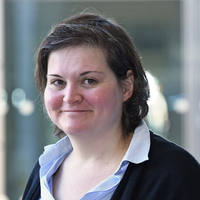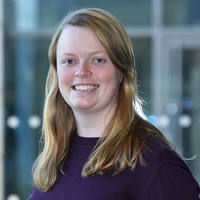Vidal-Puig Group
Obesity-associated Metabolic Complications
Archive Page
This page is maintained as a historical record and is no longer being updated.
The Vidal-Puig group is based at the MRC Metabolic Diseases Unit, Dept of Clinical Biochemistry at the University of Cambridge.
Their program of research explores the molecular mechanisms involved in controlling energy expenditure, fat deposition, and the mechanisms controlling the partition of energy towards oxidation or storage.
For more information about the Vidal-Puig group visit their website: https://www.tvplab-cambridge.com/
We aim to learn why being obese causes metabolic and cardiovascular problems and to provide the rational for mechanistically driven therapeutic approaches to prevent these complications which are the main cause of morbidity amongst obese patients. The projects we will develop at the Sanger Institute includes a focus on human iPS white and brown adipose tissue funded by ERC and phenotyping characterisation of murine models relevant for obesity and metabolic complications.
The Personality of the group
The Vidal-Puig group has a unique personality that reflects our values of respect, fairness and ethical standards and our passion for scientific excellence. We have created a culture that promotes inclusiveness, in a safe environment suited for learning and growing the talent and creativity of our team and individuals. The group is always evolving, initiating new projects, acquiring new technologies, and blending the different perspectives of our multicultural talent to accomplish important things. Our ambition is to become a truly innovation community, whose members are empowered to champion projects on the basis of their growing scientific knowledge, willingness and social intelligence. Thus our group encourages experiencing, taking risks, learning from failure without blame, progressive development of independency, encouragement to establish and maintain personal networks and a collegiate culture that promotes leadership.
The Vidal-Puig group is well known by its creativity reflected in the “adipose tissue expandability hypothesis” and the concept of “lipotoxicity” to explain the association between obesity and insulin resistance.
Research contributions
The Vidal-Puig group’s main contributions relate to four lines of research which are:
- Defining the adipose tissue expandability and lipotoxicity
- Proposing the use of energy dissipating strategies to reverse lipotoxicity by promoting mitochondrial biogenesis, mitochondrial uncoupling and brown fat differentiation and activation
- Establishing the relevance of hypothalamic lipid metabolism in controlling energy homeostasis and thyroid hormone and BMP8b controlling brown fat activation and
- Pioneering use of systems biology and stem cell approaches to elucidate the role of specific lipids and networks in the development the metabolic syndrome.
This programme of research is highly innovative, incorporating new technologies as research demands. This was recently recognized by the award of an ERC advanced grant to investigate molecular mechanism of human stem cell differentiation into brown and white adipocytes as a strategy to treat obesity and diabetes complications.
Vision of the group
The Vision of the group is to lead the discovery of “the new biological concepts/molecular mechanisms that are going to transform the treatment of obesity and diabetes”. Our Mission is to unravel the mechanisms controlling energy homeostasis and understand how they fail and cause obesity and diabetes. Our mission is not to find specific drugs. The reason for our existence is to identify the biochemical paths that these drugs should target.
Structure
The group has a flat structure that suits the management of our talented human capital. We promote values such as team work while acknowledging the necessary individuality and creativity to succeed as independent PIs. The track record of former trainees progressing to independent positions is very impressive. The Vidal-Puig group also encourages and provides training in management such as organizational behavior, efficient operations and budget development. In addition the group provides the opportunity of acquiring highly relevant transferable lab skills, skills in writing and presentation. Members of the team write grants and research papers. They also lead the social media communications of the the Vidal-Puig group (@TVPlab twitter), presenting latest findings at scientific meetings, as well as building social and professional networks. The group has been committed to reach the lay public. Representative example of this can be obtained at http://tvp.mrl.ims.cam.ac.uk/events/.
Previous core team members

Miss Myriam Bahri
Research Assistant

Dr Stefania Carobbio
Senior Research associate

Dr Anne-Claire Guenantin
Postdoctoral Fellow

Kathleen Long
Advanced Research Assistant
